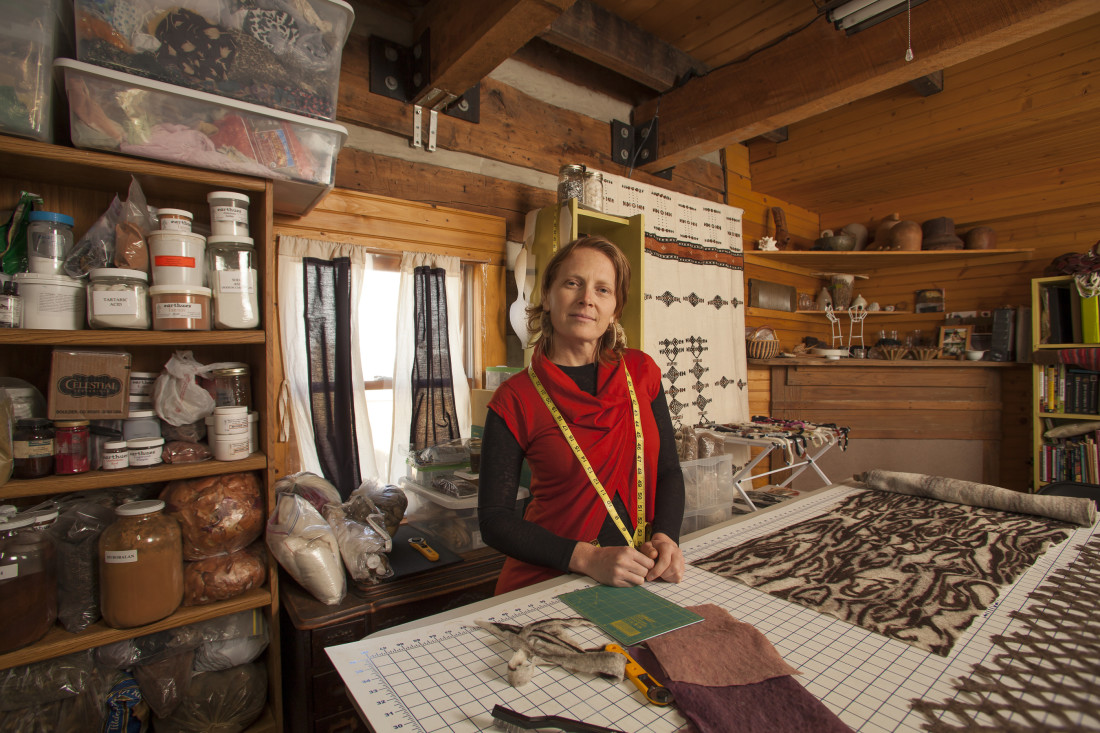“I live in downtown Asheville. I don’t have sheep,” says local artist Lisa Klakulak. “I don’t know that much about animals.” But she does know about the fiber culled from livestock, since that’s the medium in which she works. And that’s why Klakulak looks forward to the Southeastern Animal Fiber Fair — three days of fiber-focused workshops, livestock shows, vendors and demonstrations in spinning, knitting, weaving and felting. The event takes place at the Western North Carolina Agricultural Center in Fletcher, Friday-Sunday, Oct. 24-26.
Just as the farm-to-table movement connects chefs to farmers, the annual fair, now in its 21st year, connects textile workers with the animals and caretakers that provide raw materials. “I learn about crossbreeding and the kinds of fiber,” says Klakulak. “For me it’s interesting because that’s the side of it that I never explored.”
In conjunction with the fair, Klakulak is teaching a three-day workshop. Her course takes a scientific and exploratory approach to a technique widely known as nuno, which involves combining wool fiber with different kinds of prewoven fabrics. According to the artist, coercing the wool fibers through the warp and the weft, the pixel space in the actual fabric, creates a differential shrinkage process where the wool and the integrating fabric shrink at different rates and result in a wrinkly texture.
Rather than focusing on an end product, Klakulak says her course is “really about understanding all of the variables, or opening people’s doors up to multiple variables.” Using a methodical approach, students can gain some control over the material and technique. The class will “experiment with note-taking and analysis so [students] can repeat what they’ve gotten,” says Klakulak. “Or they can modify what they got to get closer to what they want, if they didn’t get it right the first time.”
The nuno technique, or “fusion,” as Klakulak calls it, can be a playful exploration of material. “You could lay wool down and put fabric on top of it,” she says. “You could put fabric, then wool, then fabric. You can stack. You can layer.” She even intends to offer some alternative material choices, such as onion bags, with which to push experimentation.
“There’s a lot of people doing it,” Klakulak says of nuno. “But I feel the understanding of what’s possible isn’t tapped into as much.” She uses the process in her own work as components of jewelry and handbags, but also as part of her figurative sculpture, “to represent skin and the degradation of skin over time. A lot of my figures are about human vulnerability.” She likens those surfaces to wrinkled or blistered skin.
Many artists use the nuno technique to make scarves, and that is how Klakulak began. “When I first started experimenting with it, I was doing scarves, but they acted more for me like a sketchbook,” she says. Not only did those fabric accessories provide learning opportunities to explore the material, but they were also sellable products and therefore funded other projects.
“Based on my interests, I tend to work more graphically in felt, but I really want to show people the range,” says Klakulak. She’ll do exactly that during her workshop. “They can get impressionistic effects if they want, and they can get really graphic effects if they want.”
WHO: Southeastern Animal Fiber
WHERE: WNC Agricultural Center, saffsite.org
WHEN: Friday-Sunday, Oct. 24-26. $3/free for ages 13 and younger. Workshop prices vary. Check website for details.






I have two Maine Coon cats . They have fantastic , half long, very soft! fur.
Every time i comb them—they really need combing— i have hands full of their fur.
Perfect to use it after washing.
i wish i was somewhere near to join the classes.
But The Netherlands is too far away.
Enjoy life and creating.